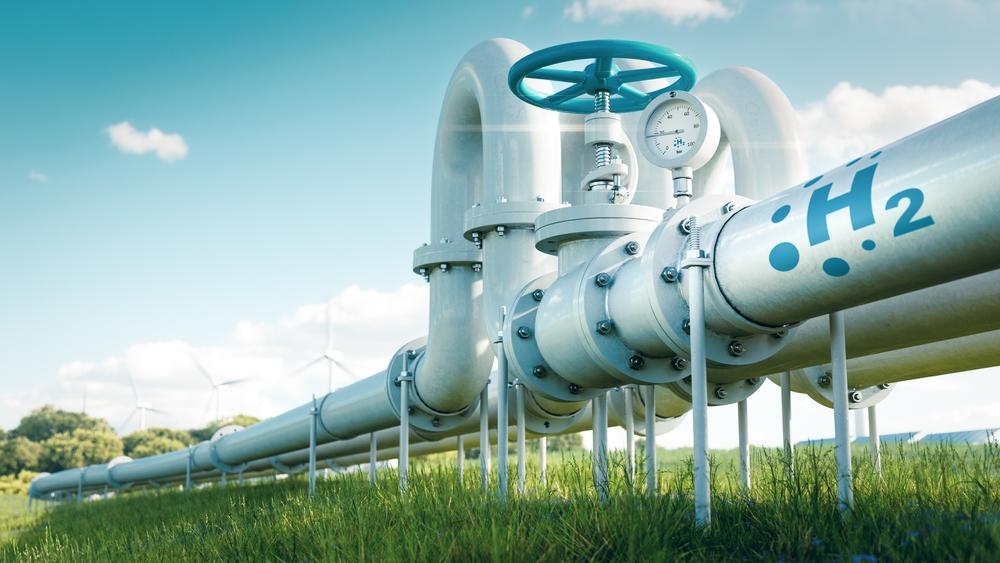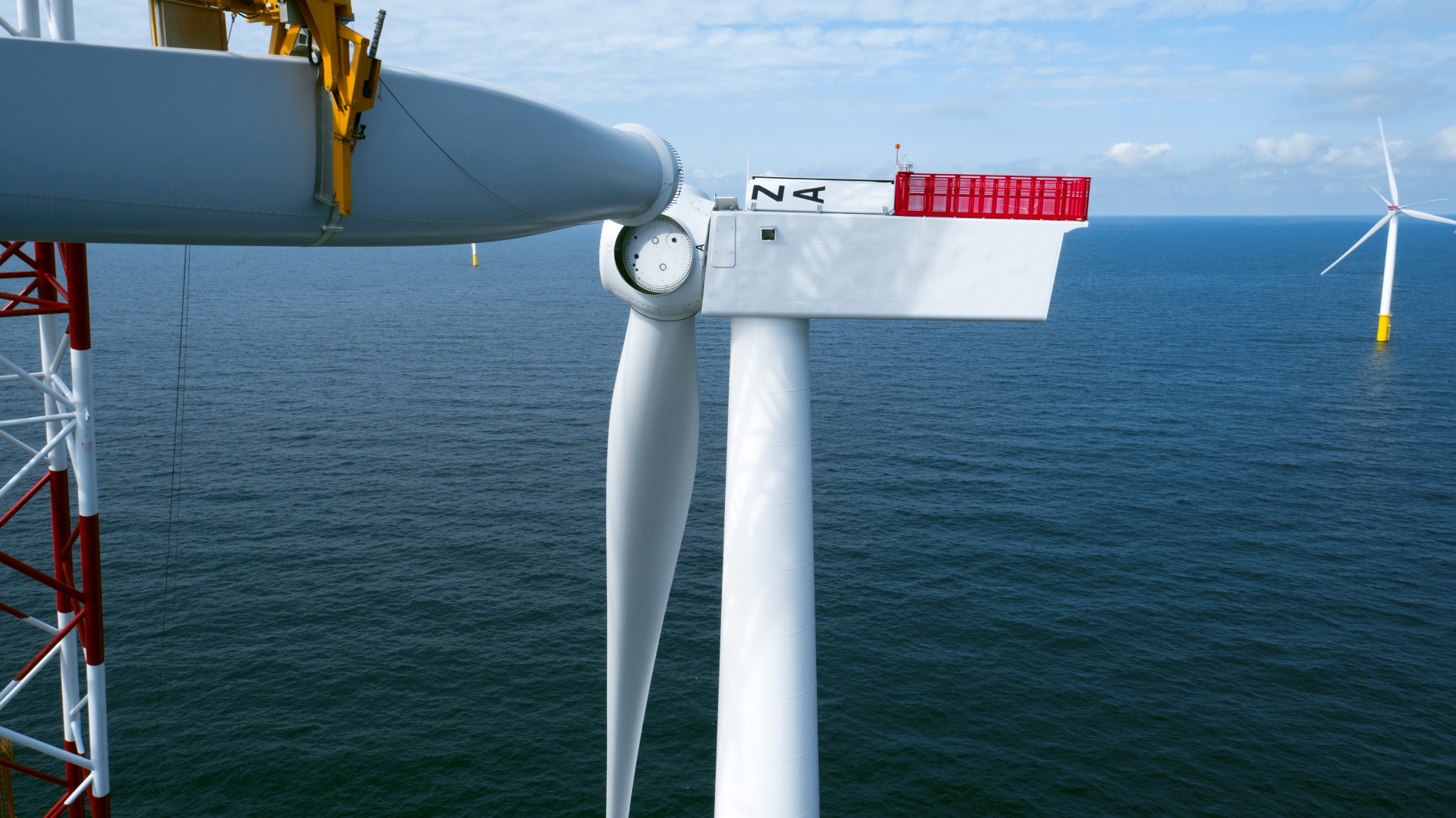The U.S. Inflation Reduction Act (IRA) and the nation’s ambitions to reduce emissions continue to boost the solar sector with two companies announcing plans this week for $1 billion-plus solar panel manufacturing facilities.
Louisiana’s Iberia Parish will become home to First Solar’s fifth manufacturing facility in the U.S., the company said Aug. 10, as demand for solar panels surges.
Singapore-headquartered Maxeon Solar Technologies Ltd. also said Aug. 10 it will build a 3-gigawatt (GW) photovoltaic (PV) cell and panel manufacturing facility in Albuquerque, New Mexico, marking an investment of more than $1 billion.
Incentives in the IRA have been driving growth in the solar sector, luring investment from both domestic and overseas producers. The incentives include an advanced manufacturing production tax credit that can be applied to the domestic production of solar components such as modules, PV cells and wafers and solar-grade polysilicon, among other items.
First Solar’s 3.5-GW facility represents a $1.1 billion investment for the Arizona-headquartered company and creates more than 700 new direct manufacturing jobs in the state.
“As we evaluated our options, Louisiana’s ability to deliver the talent we need stood out, thanks to its extensive workforce development initiatives and the presence of academic institutions such as the University of Louisiana at Lafayette which now features a world-class solar energy lab,” First Solar CEO Mark Widmar said.
The facility, which will produce First Solar’s Series 7 modules, is expected to be complete in the first half of 2026 and boost the company’s U.S. nameplate manufacturing capacity to about 14 GW. The facility will be located at the Acadiana Regional Airport.
Earlier this year, First Solar commissioned its third Ohio factory. The company’s new Alabama facility and expanded Ohio facility is scheduled for completion in 2024. Outside of the U.S., First Solar said it plans to start commercial production of solar panels in India during the second half of this year.

Maxeon, which spun off from California’s SunPower in 2020, said its 3-GW facility in New Mexico will produce TOPCon PV-silicon solar cells and shingled-cell Performance Line solar modules. Construction is scheduled to begin in first-quarter 2024. The facility will open in 2025.
“Thanks to the support of the Biden administration, the U.S. is now poised to re-shore and scale up a domestic solar supply chain,” Maxeon CEO Bill Mulligan said in a news release. “This will enhance national energy security and create a new cadre of well-paying manufacturing jobs.”
The investment is subject to securing a loan from the U.S. Department of Energy, the company said.
Plans are to build the facility on a 160-acre site in the Albuquerque community of Mesa Del Sol. Due to ample acreage, infrastructure and customer demand, Maxeon said it is considering plans to increase the nameplate capacity of the facility to 4.5 GW. A final decision is expected later this year.
Here is a look at other renewable energy news this week.
Biofuels/RNG
SoCalGas Submits Application for Large RNG Pilot Project

Southern California Gas Co. (SoCalGas) said Aug. 8 it plans to turn agricultural waste into renewable natural gas (RNG) as part of what could become California’s largest RNG pilot project.
The project, which would be developed by San Joaquin Renewables LLC in McFarland, Calif., would produce up to 4.5 billion cubic feet (Bcf) of RNG annually from 400,000 to 500,000 tons of agricultural waste, if the project is approved. SoCalGas has submitted its application for the project to the California Public Utilities Commission (CPUC).
“Instead of burning this agricultural waste, this project could produce more RNG annually than the entire state of Hawaii uses each year, putting this waste to good use to help shore up energy reliability and resiliency as we transition to a clean energy economy,” said Neil Navin, chief clean fuels officer at SoCalGas.
As part of ongoing clean energy efforts, the CPUC requires utilities to hit biomethane procurement targets to reduce emissions. The state’s short-term 2025 target aims for 17.6 Bcf of biomethane, which it says corresponds to 8 million tons of organic waste diverted annually from landfills. The medium-term 2030 target is for utilities to procure 72.8 Bcf of biomethane per year, to move the state closer to its goal of reducing methane emissions 40% by 2030.
Utilities are also required under the state’s Renewable Gas Procurement Standard, which was adopted in February 2022, to replace a certain percentage of traditional gas with RNG by 2030. SoCalGas said it is required to replace about 12.2% of the traditional gas it delivers to customers with RNG by 2030. Its interim goal is about 3% RNG by 2025.
If the company is successful in securing approvals for the RNG pilot, the project could go online in late 2026 and more than double SoCalGas’ 2022 RNG deliveries.
Plans are to use a non-combustion process to transform agricultural waste such as chipped wood and nut shells, into a mix of gases—including hydrogen—that is then cleaned and compressed for use as RNG, SoCalGas said.
The project is expected to deliver carbon-neutral fuel that is equivalent to removing up to 52,000 gasoline-powered vehicles from roads each year, according to SoCalGas.
Origin Materials, Proman Form Biofuels Partnership
California-based Origin Materials and methanol producer Proman have formed a partnership focused on producing low-carbon biofuels, the companies said Aug. 9.
The partnership will bring together Origin’s technology platform that turns carbon found in sustainable wood residues into products and Switzerland-headquartered Proman’s expertise in fuels, the companies said in a news release. The alliance comes as the biofuels market sees growth as energy industry seek ways to decarbonize to lower emissions.
“Certified lower-carbon fuels and feedstocks will play a vital role in enabling the transition to a more sustainable world,” Proman’s CEO David Cassidy said in the release. “From the production of the materials and packaging that we all use every day, to the fuels that power our global supply chains and transport these products around the world, biofuels have huge potential to drive down emissions.”
Origin Materials Co-CEO Rich Riley added that the company’s “technology platform is uniquely positioned to deliver these renewable fuels using our ‘oils and extractives’ intermediate stream.”
The companies said they will explore the production and global distribution of low-carbon biofuels as part of the partnership.
RELATED: Vision RNG’s Gas Project is Now Operational
Energy Storage
Lithium Australia, Mineral Resources Ink Deal for Queensland Pilot Project
(Reuters) Lithium Australia said on Aug. 7 it signed a deal with Mineral Resources (MinRes) to form a joint venture and develop a pilot plant that would produce lithium iron phosphate to be used in electric vehicle batteries.
Iron ore producer MinRes will solely fund the development and operation of the pilot plant in Queensland with a total budgeted cost of $2.96 million and provide raw materials at no costs to the company, Lithium Australia said.
The deal includes Lithium Australia contributing its patented LieNA technology, which can improve lithium extraction yields by up to 50%, and managing the pilot plant’s production process.
Lithium Australia is the second lithium developer moving to add value in lithium iron phosphate after the board of Australia’s biggest independent lithium producer Pilbara Minerals last week approved plans to build a trial plant.
Australian lithium companies are looking to add value along the processing supply chain to capture greater margins.
Depending on the results of the pilot plant, both companies will form a 50:50 joint venture to own and commercialize the LieNA technology.
Hydrogen
Cummins, Chevron Sign Hydrogen, Gas MOU

Cummins Inc. and Chevron have announced a memorandum of understanding (MOU) to leverage complimentary positioning in hydrogen, natural gas and other lower carbon fuel value chains.
“Collaborations like this one with Cummins are intended to make energy and global supply chains more affordable and reliable while helping commercial fleets who use our products and Cummins’ equipment to advance a lower carbon world,” said Andy Walz, Chevron’s president of Americas products.
Cummins and Chevron each have contributed to the research, development and deployment of alternative fuel systems and technologies. They will work together to enable the commercial development at scale of alternative fuels production, transportation and delivery systems for industrial and commercial markets, with target consumption by transportation vehicles of the type manufactured by Cummins.
“By collaborating strategically with Chevron, we plan to improve access to fuel and infrastructure for our customers, helping grow the availability of alternative and renewable fuels while reducing emissions,” said Jennifer Rumsey, president and CEO of Cummins.
The new collaboration focuses on hydrogen, natural gas and other alternative lower carbon-intensity fuels such as renewable gasoline blend, biodiesel, renewable diesel, compressed natural gas, and other liquid renewables to expand commercial adoption.
RELATED: Plug Power Eyes Opportunity, Addresses Challenges
Solar
Canadian Solar Lands EDF Renewables Solar Module Order
EDF Renewables North America has tapped Canadian Solar to supply up to 7 gigawatts (GW) of solar modules, the renewable energy company said Aug. 9.
The N-type Tunnel Oxide Passivated Contact (TOPCon) solar modules will be produced at Canadian Solar’s new factory in Mesquite, Texas, the Ontario-based company’s first U.S. manufacturing facility.
The agreement was reached as EDF Renewables aims to double its global renewable capacity to 50 GW, up from 28 GW, by 2030 and Canadian Solar boosts its supply of solar modules to meet growing clean energy needs. It also comes as the Inflation Reduction Act (IRA) incentivizes growth.
“We are genuinely excited about our capacity to develop and build solar projects utilizing ‘Made-in-USA’ solar modules aligning with IRA guidelines,” EDF Renewables North America CEO Tristan Grimbert said. “This substantial commitment enhances our ability to minimize risks linked to trade uncertainties and supply chain fluctuations, ultimately propelling our projects towards successful realization.”
Canadian Solar said its Mesquite facility will have an annual output of 5 GW when it is fully ramped up. Production is scheduled to start in fourth-quarter 2023.
RELATED: Forecast Shows Utilities Adding 35.2 GW of Capacity to Power Grids
Wind
Orlen Makes Conditional Investment Decision for Baltic Power Wind Farm

Orlen took a step forward with the 1.2-GW Baltic Power wind farm offshore Poland, saying Aug. 11 its supervisory board reached a conditional investment decision.
A final investment decision hinges on the developer and partner Northland Power’s ability to secure construction permits for the offshore part of the project.
“As regional pioneers in this area, we have had to do an enormous amount of preparatory and administrative work and build new competences that we will be able to use in future projects,” Daniel Obajtek, president of Orlen’s management board, said in the release. “Today’s decision is a milestone that brings us significantly closer to achieving the company’s strategic objectives.”
With construction set to begin later this year, the wind farm will feature 76 wind turbines producing enough energy to power more than 1.5 million households, the company said.
Orlen said permits have been secured for the onshore part of the project and the offshore power connection from the wind farm to land. In addition, contracts are in place for key components such as turbines, offshore and onshore substations, cables and foundations.
The project will be financed under the project finance model with financing estimated at $5.2 billion.
Developers aim to complete construction in 2026.
RWE, Vattenfall, Waterkant Energy Win 1.8 GW German Offshore Wind Auction
(Reuters) Utilities RWE, Vattenfall and development firm Waterkant Energy have been awarded four offshore wind sites in the North Sea in a tender worth 784 million euros (US $864.75 million), the German energy regulator said Aug. 10.
The companies secured rights to the areas suited to housing 1.8 GW of power turbine capacity, the authority, which awarded the rights, said in a statement, adding commissioning was expected in 2028.
The allocation complements a 12.6 billion euros offshore wind tender for 7 GW that two oil majors won in July.
Utility RWE secured 900 MW in the Nordseecluster B, which encompasses areas N-3.6 and N-3.5, some 50 km north of the island of Juist, which RWE in a separate statement said will start producing from 2029.
As RWE already won tenders for 660 MW of nearby North Sea offshore capacity sites last year, which it hopes to start up in 2027, it expects to achieve considerable synergies, it said.
In addition, RWE received area N-6.6, some 50 km north west of Nordseecluster B, where rival bidder Vattenfall has an option to exercise an entry right for co-operation with RWE, but Vattenfall must decide this by Sept. 14, the regulator said.
Area N-6.7 was given exclusively to Waterkant.
The rights entail development, construction and operation of the plants that are guaranteed to receive grid connections.
The regulator, called the Bundesnetzagentur, also said that 90% of the revenue from the tender will go to reducing power prices and the remainder on a 50:50 basis into marine protection and sustainable fishery. The marine protection part must be paid within one year to the federal budget while the 90% must be paid from 2028 over a period of 20 years.
Whereas the July auction featured a dynamic bidding design, this time the regulator based its decision on what it called “qualitative criteria”: money, decarbonization elements and the application of sustainable technologies.
Hart Energy Staff and Reuters contributed to this report.
Recommended Reading
BP to Use Palantir Software to Improve AI in Operations
2024-09-09 - BP and Palantir have agreed to a five-year strategic relationship in which Palantir’s AIP software will use large language models to improve BP operations.
Companies Hop on Digital Twins, AI Trends to Transform Day-to-day Processes
2024-10-23 - A big trend for oil and gas companies is applying AI and digital twin technology into everyday processes, said Kongsberg Digital's Yorinde Lokin-Knegtering at Gastech 2024.
ChampionX Releases New Plunger Lift Well Solution
2024-09-13 - The SMARTEN Unify control system is the first plunger lift controller in ChampionX’s SMARTEN portfolio.
Salunda, Intellilift Enter Pact to Optimize Automation in Well Construction
2024-08-21 - The agreement was signed following a successful pilot trial integrating Intellilift’s digital technologies with Salunda’s patented camera and wearable red zone monitoring solutions on a drilling rig.
Geospace Technologies Sells Seismic Data Nodes to SAExploration
2024-08-28 - SAExploration exercised its purchase option from an existing rental contract to make the purchase of seabed ocean bottom wireless seismic data acquisition nodes.
Comments
Add new comment
This conversation is moderated according to Hart Energy community rules. Please read the rules before joining the discussion. If you’re experiencing any technical problems, please contact our customer care team.






